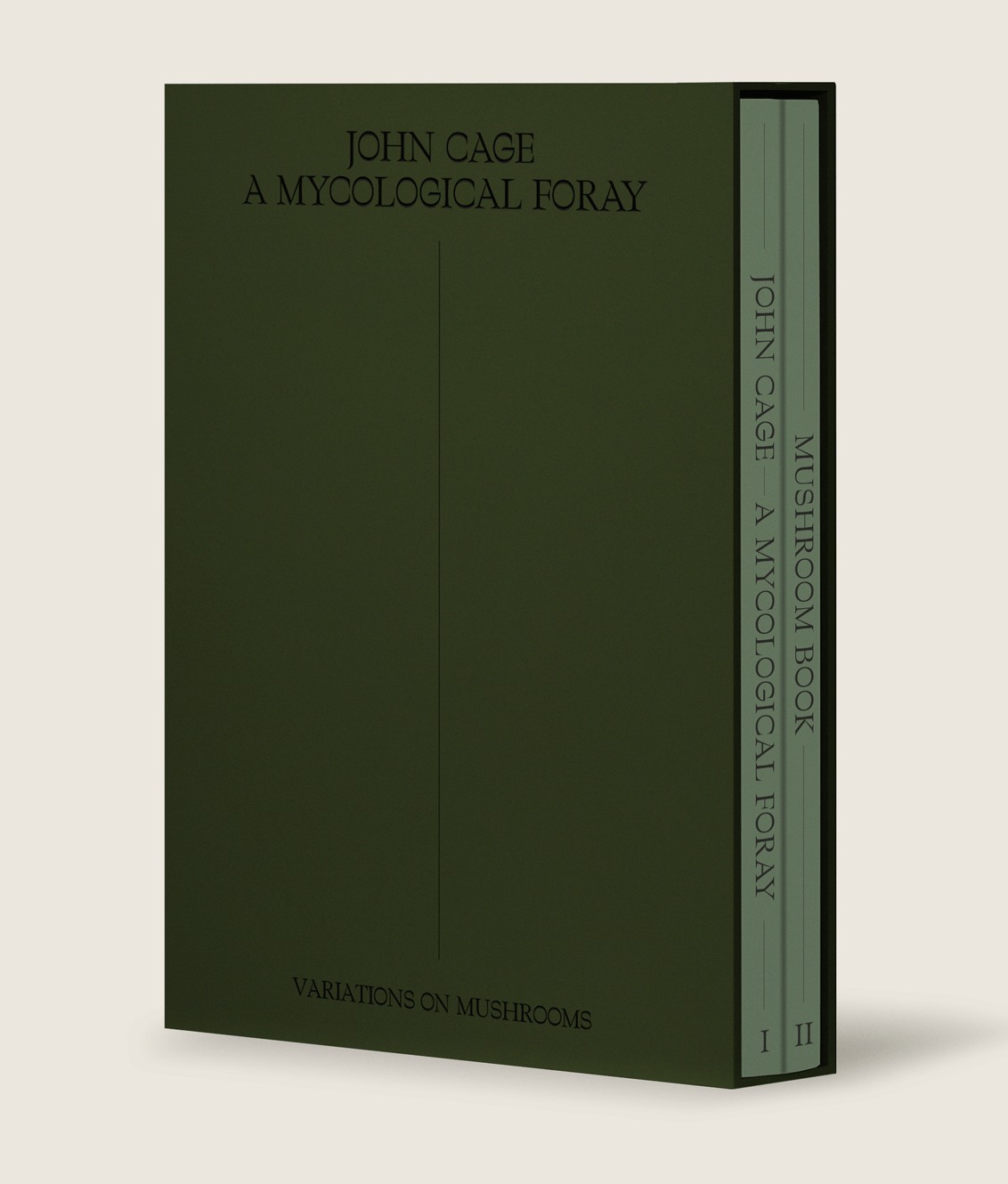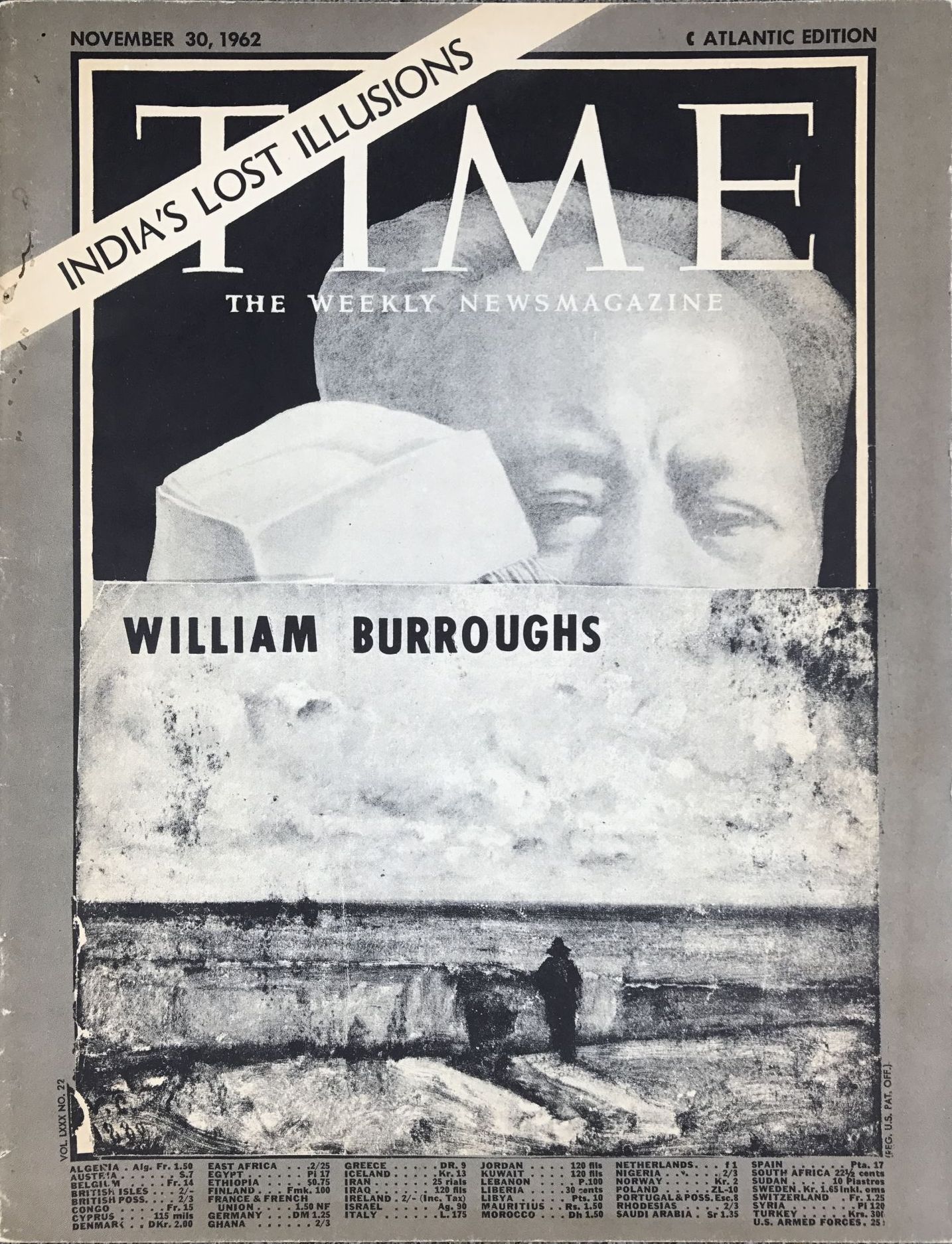John Cage: A Mycological Foray – Variations on Mushrooms, 2 vols. (1972/2020)
Filed under artist publishing, book | Tags: · chance, composing, composition, ecology, mushrooms, music, sound

“John Cage: A Mycological Foray draws readers across the idiosyncratic, mushroom-suffused, innermost landscape of celebrated American composer John Cage. Upon the remarkable journey with Cage, one encounters assorted photographs, compositions, and contemplations; all in the very same unexpected fashion one encounters various flora and fungi species while mushroom foraging.
Volume I encompasses Cage’s mycological-oriented Indeterminacy stories, Diary excerpts, and essays; and the complete transcript of Cage’s 1983 performance, MUSHROOMS et Variationes.”
Volume II offers the inaugural reproduction of Cage’s 1972 portfolio, Mushroom Book, printed in 1972 in the limited run of 75 copies. The book is a study of fifteen different species of mushrooms, and each folio includes Cage’s poetry, sketches, and drawings (placed on the page by chance operations); scientific information about the mushrooms by Alexander H. Smith; and botanical illustrations by Lois Long.
John Cage: A Mycological Foray is developed in collaboration with the John Cage Trust.
With essay by Kingston Trinder and texts by Isabelle Bucklow.
Edited by Ananda Pellerin
Publisher Atelier Éditions, New York, 2020
ISBN 1733622004, 9781733622004
224 pages
via Alexandra Fanning, HT Georges Vantongerloo
PDF (watermarked file from publisher’s Dropbox, contains both volumes; no longer available as of 2 July 2020)
Comments (9)Danny Snelson: Apocalypse Reliquary, 1984-2000 (2018)
Filed under artist publishing | Tags: · apocalypse, disaster, earth, history

“Inhabiting an Earth continuously subjected to catastrophic events, Apocalypse Reliquary presents a survey of artifacts left behind by every recorded global cataclysm from 1984 to the present. Objects on display range from the circuit boards of Y2K to ejecta from the collision with Halley’s Comet. The exhibition includes spaceships from the Pleiades photon belt, the radioactive remains of countless nuclear armageddons, relics from the Zeta Reticuli star system, and a wide array of artifacts delivered by dozens of religious raptures.
Each entry in the Apocalypse Reliquary is inscribed within the ongoing disaster of the present. Organized chronologically, the catalogue begins in 1984, immediately following the collapse of the planet under the strain of the population bomb. The reliquary will continue to annotate the ruins of global annihilation until a final apocalyptic event renders all recording impossible.”
The book was produced on the occasion of Exhibition Library and first presented at an exhibition at the Seoul Museum of Art.
Publisher Monoskop, Amsterdam, and Mediabus, Seoul, 2018
[133] pages
PDF (82 MB)
See also follow-up to the project: Full Bleed: A Mourning Letter for the Printed Page (2019).
Comment (0)William Burroughs: Time (1965)
Filed under artist publishing | Tags: · collage, cut-up

“Burroughs created his own version of Time magazine, including a Time cover of November 30, 1962, collaged over by Burroughs with a reproduction of a drawing, four drawings by Gysin, and twenty-six pages of typescript comprised of cut up texts and various photographs serving as news items. One of the pages is from an article on Red China from Time of September 13, 1963, and is collaged with a columnal typescript and an irrelevant illustration from the ‘Modern Living’ section of the magazine. A full-page advertisement for Johns-Manville products is casually inserted amid all these text; its title: ‘Filtering’.” (from Robert A. Sobieszek, Ports of Entry, 1996, 37)
The “Fliday Newsmagazine,” “Proclaim Present Time Over,” “File Flicker Tape” are some of the texts. The November 30, 1962 issue of Time was chosen, because the magazine reviewed the Grove Press edition of Naked Lunch in an article entitled “King of the YADS” (Young American Disaffiliates). The looming face of Mao symbolizing the threat of Red China adds an aura of nuclear disaster.” (Jed Birmingham, 2006)
With drawings by Brion Gysin
Publisher C Press, New York City, 1965
[28] pages
Commentary: Jed Birmingham (Reality Studio, 2006).
PDF (28 MB, via Reality Studio)
PDF (63 MB, via Goran Vejvoda)

